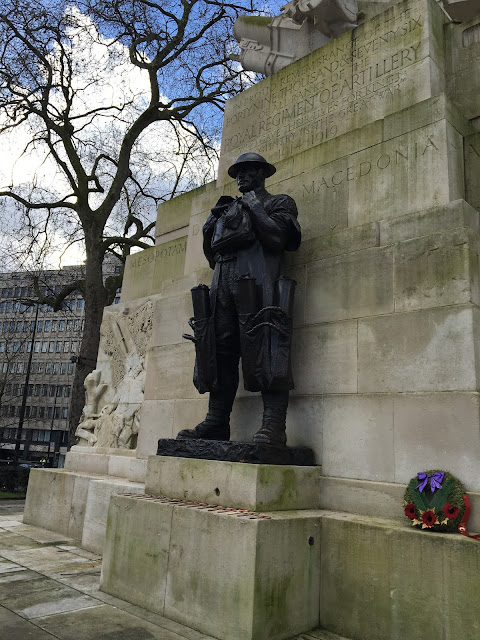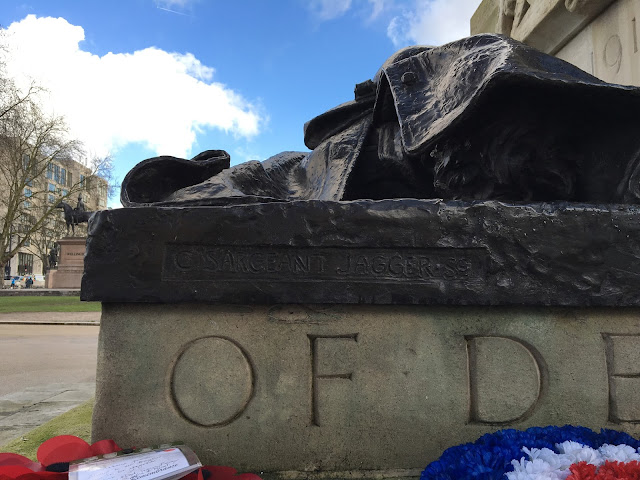To London on Tuesday and a day out with the brother. After a wet, dull start in Lincolnshire I was greeted by brilliant winter sun on Piccadilly. First stop was Shepherd Market, a tight, attractive knot of streets built to serve the more elegant streets around. It has long had a raffish history - bohemian, and a haunt of high class prostitution. It also has part in literary history; Anthony Powell, author of the multi-volume novel 'A Dance to the Music of Time' had a flat there. Today it isn't as raffish, being mostly nice places to eat, galleries and boutique shopping. A good place to explore though. Over the road on the other side of Curzon St. is one of London's more interesting bookshops Heyward Hill - Nancy Mitford ran the place during the War.
From there we walked along Piccadilly to Hyde Park Corner. Since the end of the Napoleonic Wars Hyde Park Corner has become encrusted with the memory of wars and conflicts. In recent this years this process of accumulation has increased in volume and speed with some very questionable aesthetic choices. What however drew me to make a return visit was an earlier response to conflict: the Royal Artillery Monument, (1921-25) - the work of Charles Sergeant Jagger (1883-1934) with the help of the architect Lionel Pearson (1879-1953). I think it one of most moving War memorials built post WWI. It is also, I believe, an work of great aesthetic power and strength - a great mound of sculpted white Portland stone culminating in an over life-sized sculpture of a field gun - a Howitzer apparently. Each of the four sides bears bass-reliefs of deep emotive power, and set before each a single bronze sculpture of a soldier - driver, captain, shell-carrier, and finally, to the north, the body of dead soldier. 'Experience in the trenches', he old the Daily Express at the time, 'persuaded me of the necessity for frankness and truth.' Jagger, who had given up his Rome Prize to enlist, himself was wounded twice during the war and awarded the Military Cross for his bravery.
Jagger was a sculptor of immense talent and psychological insight, who had trained in Sheffield and the Royal College of Art and been an apprentice silversmith at Mappin and Webb, but alas fashion being what it is, he is largely forgotten now, and there have been constant criticisms of the memorial. We, however, were left speechless and humbled by the virtuosity of the work. I even felt reluctant to ascend the steps to get a better photo.















No comments:
Post a Comment